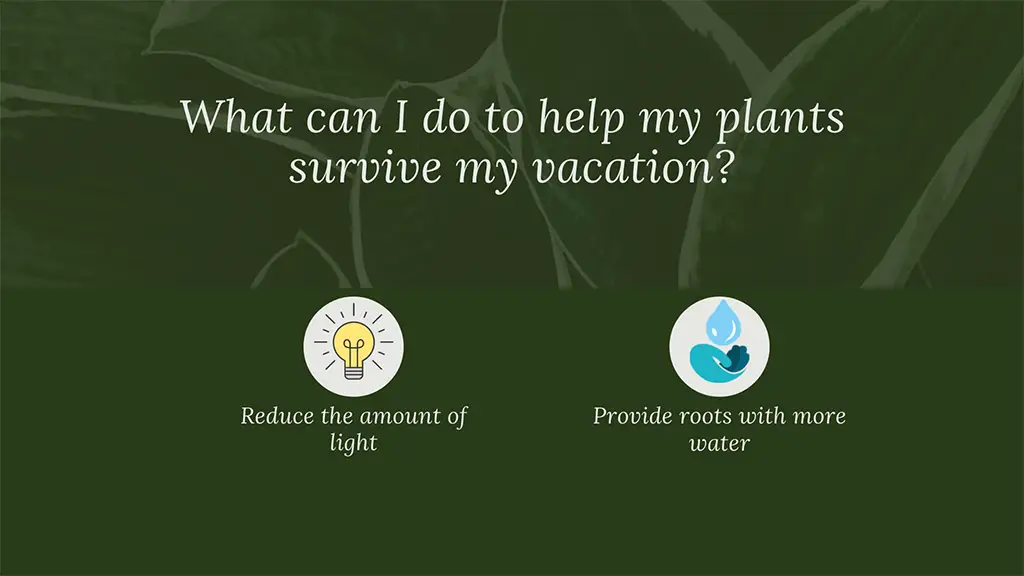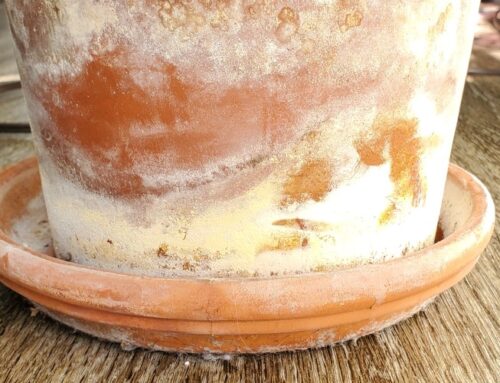
It’s vacation season, and you’re planning a trip. You’ve deserved it and nothing can stop you from finally taking a dip into the sea, relaxing in the woods, or enjoying some quality time with your friends and family.
But, how to keep plants alive while away?

They can survive for a few days without you, but what are you going to do with them now that you need to leave for a week or maybe even longer?
In your absence and without your care, your indoor plants will dehydrate, that’s for sure. That lush greenery you enjoy over the year will most likely transform into a withered, scorched desert while you’re enjoying your time off. It seems like a high price to pay for a few weeks of traveling.
This was exactly my problem recently when I was planning my trip to Europe, Serbia. My only option was to leave my plants with a friend experienced in plant care.
Help your plants survive your vacation on their own
Not everyone is lucky to have a friend who is perfectly happy or capable to plant sit. If you don’t have a friend or a neighbor that can help water plants and care for them while you’re away, take a look at these different ways you can keep your plants alive and well on their own when you’re away up to two weeks.

Reduce the amount of light
Less light helps the soil stay moist longer. Lowering the amount of light will reduce photosynthesis and the amount of water roots pull from the soil, keeping the soil moist longer. Bright light (over 3,000 lux) and direct sunlight dry out the plant’s soil faster.
You will reduce the natural light by
– moving your plants away from the windows – light intensity drops significantly with distance. Every foot away from the window reduces the light drastically⠀
– pulling the blinds down – Even if you just pull the blinds down, but leave them open, this will still significantly reduce the amount of light. But if you want to really reduce it, close the blinds
– turning off the grow lights
– moving your plants to a shady spot (from direct light to indirect light)
– lowering the room temperature to reduce the level of photosynthesis – If you usually keep your home at 75F (24F), by reducing the temperature to 70F (21C) or 65F (18C), you will reduce the level of photosynthesis and how fast the plants will be using the water from the soil
Provide roots with more water
You will achieve this by⠀
– leaving saucers full of water – as the soil dries out, it will absorb the extra water from the saucer
– moving cuttings from test tubes and small propagation vessels to a big dish with more water – smaller vessels contain less water which will evaporate and be used by the cuttings faster than a large vessel with a lot of water
– repotting plants from small pots into larger pots, so they have more soil to get water from⠀
– moving potted plants from terracotta pots that are porous and absorb water from the soil to glazed ceramic or plastic pots that hold water better, as they don’t absorb it from the soil
Before you leave…
Before you leave for a trip, it is important to keep in mind that the longer your plants sit in moist soil, the longer the roots will be deprived of oxygen and more likely to rot.
It’s best if your plants are in good health, so they have better chances of surviving while you’re away. If they have previously received good care long-term, they will have enough sugar reserves to use during your absence, in the conditions of low light, so applying all of the above listed tips will help keep your plants alive.
Also, have in mind that these solutions are short-term and I don’t recommend them if you’re planning on going away for an extended vacation, for more than two weeks. In that case, I wholeheartedly recommend looking for a plant sitter, be it your friend or a neighbor you trust.
Get an experienced plant sitter
This sounds easier than it is. It would be amazing if you could hire a professional plant sitter whenever you need to travel. You might be able to find some people in your area who take care of houses, pets, and plants, and there may also be a few specialized, professional plant sitter companies, although their services will probably be oriented primarily toward commercial clients, and probably be pricey too.
This leaves you with an option to find an individual who will be able to take care of your indoor plants while you’re gone. And, trust me, you need a person who is capable to do it properly and has the necessary knowledge. Never leave your plants with someone who has zero plant experience. An exception from this rule can be finding a dedicated person who can follow your instructions well, to the last detail.

Make it easy — provide your plant sitter with a system that works
If you’re going to be absent for a longer period like I was recently, the best option is to get a plant sitter, as I have. Since my friend is a trustworthy person but isn’t plant-savvy, I decided to help her help me and my plants.
Try my post-its plant care system
I created a simple plant care system that consisted of watering instructions written on post-its. If you have post-it notes in different colors, that will work even better. Each post-it note was attached to a particular plant and had everything my friend needed to know to be able to keep them alive. The post-it notes instructions system consisted of the information on watering days/watering frequency and the instructions of the amount of water needed.

For some plants, giving the instructions was easy. The post-it listed “1” if the plant needed water once a week, “2” for twice a week, “3” for three times a week, and “0” if it is a succulent or cacti that can survive a long time without water, hence didn’t need to be watered in my absence. In terms of the amount of water needed, tropical plants in a 4″ pot didn’t need instructions, as they are not easy to get overwatered in my place with a lot of light, so that was easy. But with large plants placed in larger pots, the amount of water used can make a big difference. Some of my large plants like Monstera and Peace Lily require 0.5 gallon or ¾ gallon of water for each watering (2 to 3 liters). Since they are large, they also transpire a lot, plus they are planted in terracotta pots with well-draining potting mixes, so they dry out fast, while other plants require about ¼ gallon or even less (1L or less).

Do some watering sessions with your plant sitter
To make sure my friend understands the routine and gets the feel of how much water to use, we did a few watering sessions together, which turned out a great idea; she felt confident and at ease when I went away. But even without these thorough watering sessions, it would be enough just to create an additional mark on the post-its that would simply say that 1/2 watering can is to be used on smaller plants, 1 or 2 cans on bigger plants. Along with any other special instructions (i.e. distilled water for carnivorous plants).
And that’s it! So simple, right?
After my trip of almost a month, my indoor plants were not only surviving but thriving, all thanks to my committed friend and my simple yet smart and efficient post-its watering instructions system. My friend is also happy to help me another time with the plants when I need her, which means the world to me!
If you get a chance to try out the post-its plant watering system, please let me know how it worked out for you.
Enjoy your trip with peace of mind
I hope these tips provided you with the knowledge you can use and some peace of mind, so you can go on a trip and don’t have to worry about your plants. As you can see — it’s all about setting up an appropriate system and thinking ahead. The first choice should always be getting a plant sitter but if you’re unable to find one, enable your indoor plants to survive on their own while you’re away.
I hope you have a fantastic trip and your plants welcome you in all of their beauty when you’re back!
Yours Truly,





Hi Vladan! I’m curious about your thoughts on using watering spikes. I will be gone for about two weeks and have a fairly sizable tropical plant collection along with some other houseplants. I am a very new plant parent and this will be my first time away. I purchased several self watering spikes with the thought that my plants would be able to take the water they needed as needed. I haven’t really used them before and am nervous about coming home to root rot. Any thoughts or experience with these devices?
Hi Tracy, there are several types of watering spikes – ones that you attach to a plastic bottle and standalone ones that you fill up with water. But there are so many factors that it’s difficult to give general advice on whether they will be useful for you (what plants you have, which size, how much light they’re getting, what types of pots you are using, what is your potting mix like…).
Standalone spikes are generally not big. I for example have several very large and thirsty plants, and looots of light, so standalone plastic or glass spikes won’t provide sufficent water for a lot of my plants. If you’re using them for smaller plant, that can work. Again, it depends on a lot of factors.
I would suggest trying them out BEFORE you go on leave. And seeing how well they work for a specific plant. In combination with the suggestions from this blog post, you should be able to make it work